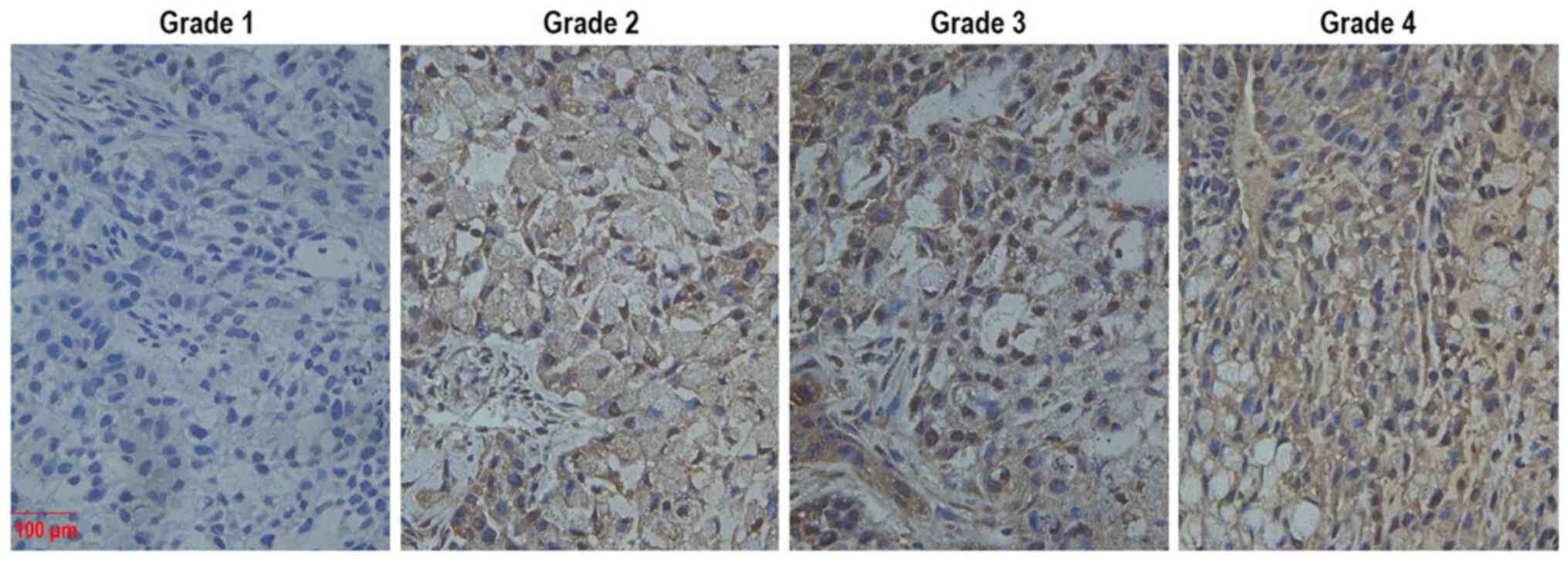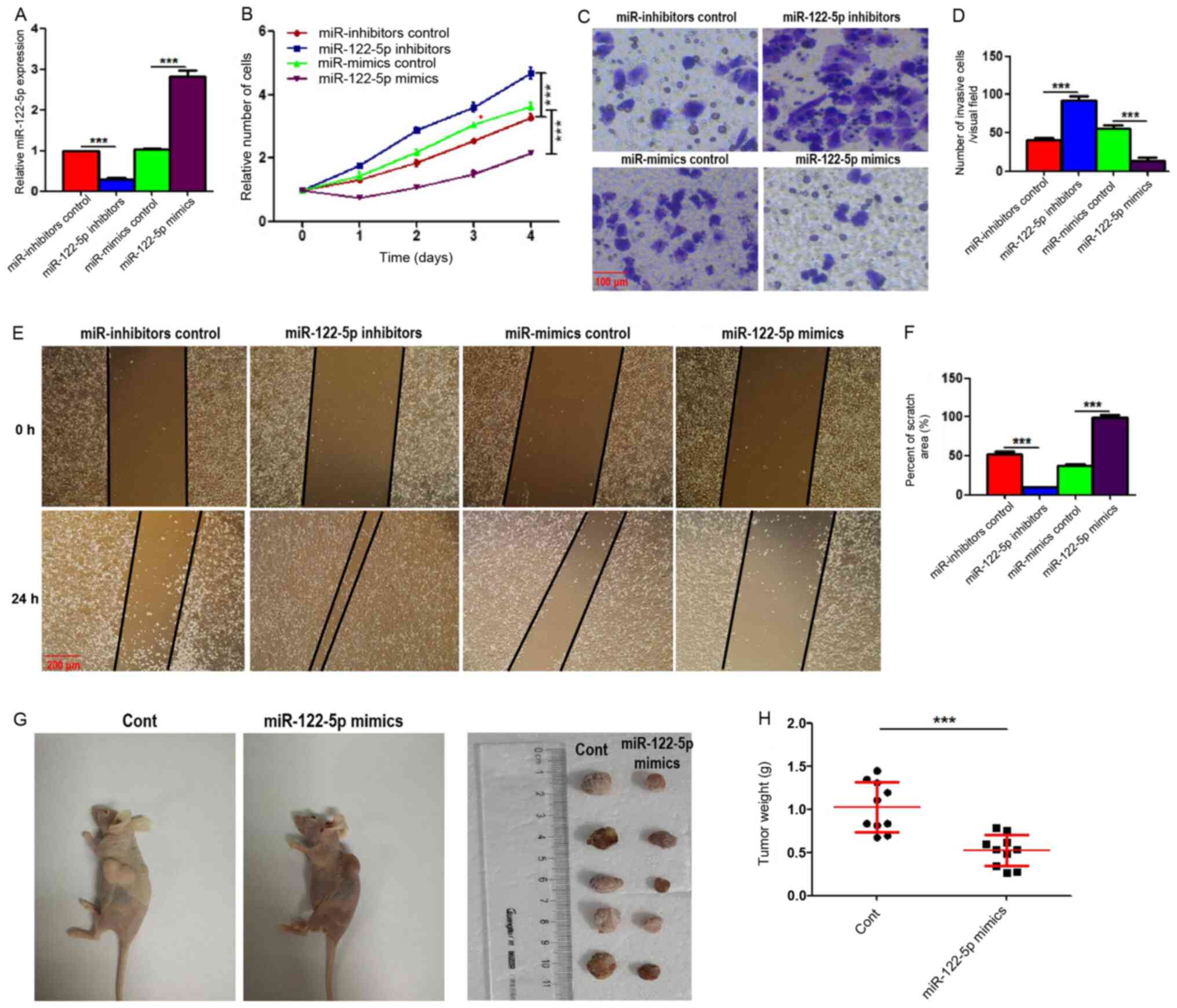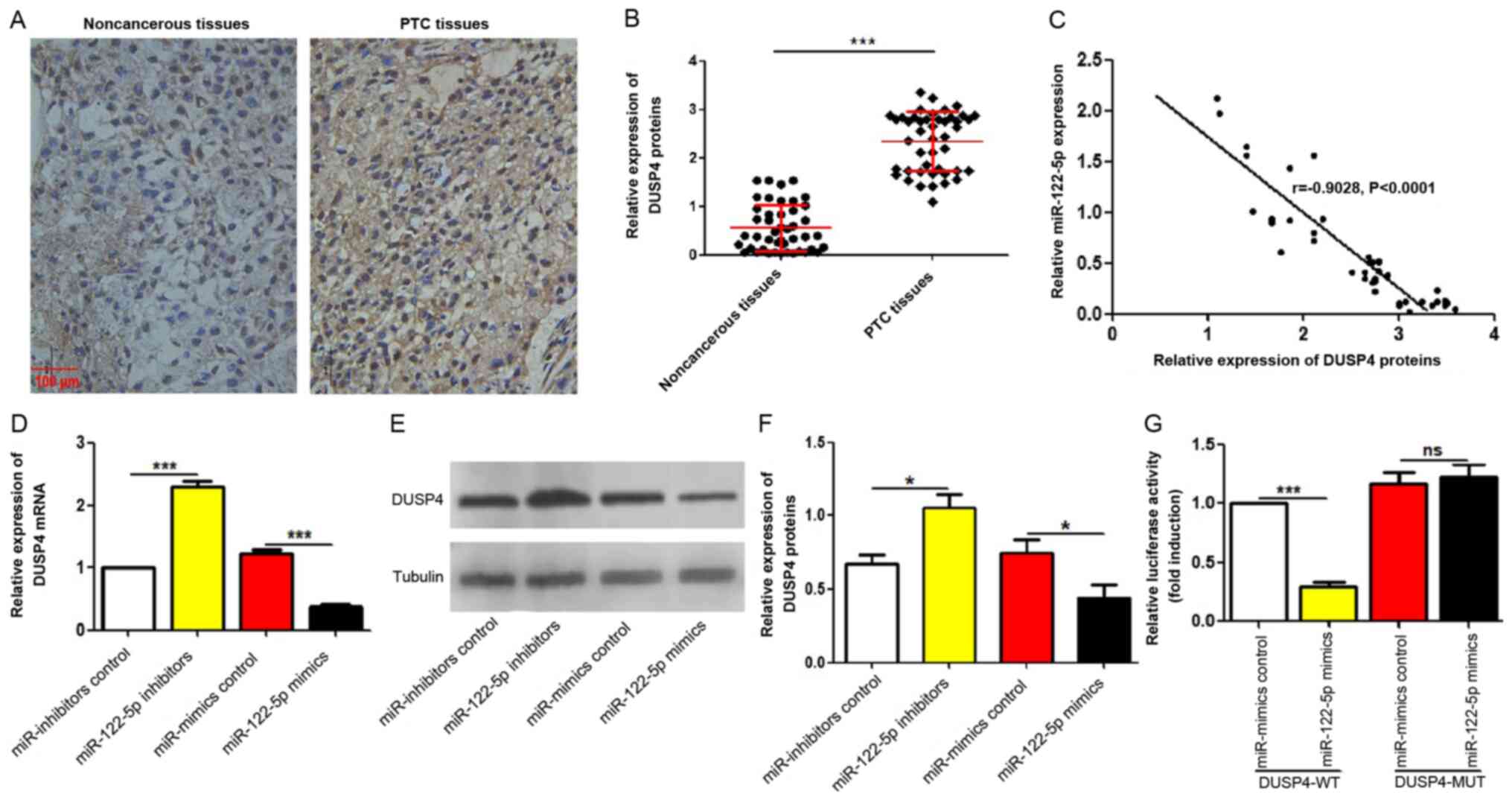|
1
|
Yang Z, Li G, Ding C, Sun W and Zhang J:
Long non-coding RNA HULC exerts oncogenic activity on papillary
thyroid cancer in vitro and in vivo. Artif Cells Nanomed
Biotechnol. 48:326–335. 2020. View Article : Google Scholar : PubMed/NCBI
|
|
2
|
Wiltshire JJ, Drake TM, Uttley L and
Balasubramanian SP: Systematic review of trends in the incidence
rates of thyroid cancer. Thyroid. 26:1541–1552. 2016. View Article : Google Scholar : PubMed/NCBI
|
|
3
|
Wang DP, Tang XZ, Liang QK, Zeng XJ, Yang
JB and Xu J: microRNA-599 promotes apoptosis and represses
proliferation and epithelial-mesenchymal transition of papillary
thyroid carcinoma cells via downregulation of Hey2-depentent Notch
signaling pathway. J Cell Physiol. 235:2492–2505. 2020. View Article : Google Scholar : PubMed/NCBI
|
|
4
|
Han J, Zhang M, Nie C, Jia J, Wang F, Yu
J, Bi W, Liu B, Sheng R, He G, et al: miR-215 suppresses papillary
thyroid cancer proliferation, migration, and invasion through the
AKT/GSK-3β/Snail signaling by targeting ARFGEF1. Cell Death Dis.
10:1952019. View Article : Google Scholar : PubMed/NCBI
|
|
5
|
Ma J, Li T, Han X and Yuan H: Knockdown of
LncRNA ANRIL suppresses cell proliferation, metastasis, and
invasion via regulating miR-122-5p expression in hepatocellular
carcinoma. J Cancer Res Clin Oncol. 144:205–214. 2018. View Article : Google Scholar : PubMed/NCBI
|
|
6
|
Xu Z, Liu G, Zhang M, Zhang Z, Jia Y, Peng
L, Zhu Y, Hu J, Huang R and Sun X: miR-122-5p inhibits the
proliferation, invasion and growth of bile duct carcinoma cells by
targeting ALDOA. Cell Physiol Biochem. 48:2596–2606. 2018.
View Article : Google Scholar : PubMed/NCBI
|
|
7
|
Xu X, Gao F, Wang J, Tao L, Ye J, Ding L,
Ji W and Chen X: MiR-122-5p inhibits cell migration and invasion in
gastric cancer by down-regulating DUSP4. Cancer Biol Ther.
19:427–435. 2018. View Article : Google Scholar : PubMed/NCBI
|
|
8
|
Balko JM, Schwarz LJ, Bhola NE, Kurupi R,
Owens P, Miller TW, Gómez H, Cook RS and Arteaga CL: Activation of
MAPK pathways due to DUSP4 loss promotes cancer stem cell-like
phenotypes in basal-like breast cancer. Cancer Res. 73:6346–6358.
2013. View Article : Google Scholar : PubMed/NCBI
|
|
9
|
Hijiya N, Tsukamoto Y, Nakada C, Tung
Nguyen L, Kai T, Matsuura K, Shibata K, Inomata M, Uchida T,
Tokunaga A, et al: Genomic loss of DUSP4 contributes to the
progression of intraepithelial neoplasm of pancreas to invasive
carcinoma. Cancer Res. 76:2612–2625. 2016. View Article : Google Scholar : PubMed/NCBI
|
|
10
|
Chen M, Zhang J, Berger AH, Diolombi MS,
Ng C, Fung J, Bronson RT, Castillo-Martin M, Thin TH, Cordon-Cardo
C, et al: Compound haploinsufficiency of Dok2 and Dusp4 promotes
lung tumorigenesis. J Clin Invest. 129:215–222. 2019. View Article : Google Scholar : PubMed/NCBI
|
|
11
|
Gröschl B, Bettstetter M, Giedl C,
Woenckhaus M, Edmonston T, Hofstädter F and Dietmaier W: Expression
of the MAP kinase phosphatase DUSP4 is associated with
microsatellite instability in colorectal cancer (CRC) and causes
increased cell proliferation. Int J Cancer. 132:1537–1546. 2013.
View Article : Google Scholar : PubMed/NCBI
|
|
12
|
Ma B, Shi R, Yang S, Zhou L, Qu N, Liao T,
Wang Y, Wang Y and Ji Q: DUSP4/MKP2 overexpression is associated
with BRAF(V600E) mutation and aggressive behavior of papillary
thyroid cancer. Onco Targets Ther. 9:2255–2263. 2016.PubMed/NCBI
|
|
13
|
Heinemann FG, Tolkach Y, Deng M, Schmidt
D, Perner S, Kristiansen G, Müller SC and Ellinger J: Serum
miR-122-5p and miR-206 expression: Non-invasive prognostic
biomarkers for renal cell carcinoma. Clin Epigenetics. 10:112018.
View Article : Google Scholar : PubMed/NCBI
|
|
14
|
Cheng G, Li Y, Liu Z and Song X: The
microRNA-429/DUSP4 axis regulates the sensitivity of colorectal
cancer cells to nintedanib. Mol Med Rep. 23:12012.
|
|
15
|
Livak KJ and Schmittgen TD: Analysis of
relative gene expression data using real-time quantitative PCR and
the 2(-Delta Delta C(T)) method. Methods. 25:402–408. 2001.
View Article : Google Scholar : PubMed/NCBI
|
|
16
|
Masson D, Rioux-Leclercq N, Fergelot P,
Jouan F, Mottier S, Théoleyre S, Bach-Ngohou K, Patard JJ and Denis
MG: Loss of expression of TIMP3 in clear cell renal cell carcinoma.
Eur J Cancer. 46:1430–1437. 2010. View Article : Google Scholar : PubMed/NCBI
|
|
17
|
Kong QF, Lv B, Wang B, Zhang XP, Sun HJ
and Liu J: Association of von Willebrand factor (vWF) expression
with lymph node metastasis and hemodynamics in papillary thyroid
carcinoma. Eur Rev Med Pharmacol Sci. 24:2564–2571. 2020.PubMed/NCBI
|
|
18
|
Huang Y, Yu S, Cao S, Yin Y, Hong S, Guan
H, Li Y and Xiao H: MicroRNA-222 promotes invasion and metastasis
of papillary thyroid cancer through targeting protein phosphatase 2
regulatory subunit B alpha expression. Thyroid. 28:1162–1173. 2018.
View Article : Google Scholar : PubMed/NCBI
|
|
19
|
Lima CR, Geraldo MV, Fuziwara CS, Kimura
ET and Santos MF: MiRNA-146b-5p upregulates migration and invasion
of different papillary thyroid carcinoma cells. BMC Cancer.
16:1082016. View Article : Google Scholar : PubMed/NCBI
|
|
20
|
Ding C, Yu H, Shi C, Shi T, Qin H and Cui
Y: MiR-let-7e inhibits invasion and magration and regulates HMGB1
expression in papillary thyroid carcinoma. Biomed Pharmacother.
110:528–536. 2019. View Article : Google Scholar : PubMed/NCBI
|
|
21
|
Zhou B, Xu J, Chen Y, Gao S, Feng X and Lu
X: miR-200b/c-RAP1B axis represses tumorigenesis and malignant
progression of papillary thyroid carcinoma through inhibiting the
NF-κB/Twist1 pathway. Exp Cell Res. 387:1117852020. View Article : Google Scholar : PubMed/NCBI
|
|
22
|
Zhou P, Irving A, Wu H, Luo J, Aguirre J,
Costa M, Khamsuree M, Gerads N and Liu W: Validation of
MicroRNA-188-5p inhibition power on tumor cell proliferation in
papillary thyroid carcinoma. Cell Transplant.
29:9636897209183002020. View Article : Google Scholar : PubMed/NCBI
|
|
23
|
Liu H, Chen X, Lin T, Chen X, Yan J and
Jiang S: MicroRNA-524-5p suppresses the progression of papillary
thyroid carcinoma cells via targeting on FOXE1 and ITGA3 in cell
autophagy and cycling pathways. J Cell Physiol. 234:18382–18391.
2019. View Article : Google Scholar : PubMed/NCBI
|
|
24
|
Santiago K, Chen Wongworawat Y and Khan S:
Differential MicroRNA-signatures in thyroid cancer subtypes. J
Oncol. 2020:20523962020. View Article : Google Scholar : PubMed/NCBI
|
|
25
|
Jiang K, Li G, Chen W, Song L, Wei T, Li
Z, Gong R, Lei J, Shi H and Zhu J: Plasma exosomal miR-146b-5p and
miR-222-3p are potential biomarkers for lymph node metastasis in
papillary thyroid carcinomas. Onco Targets Ther. 13:1311–1319.
2020. View Article : Google Scholar : PubMed/NCBI
|



















